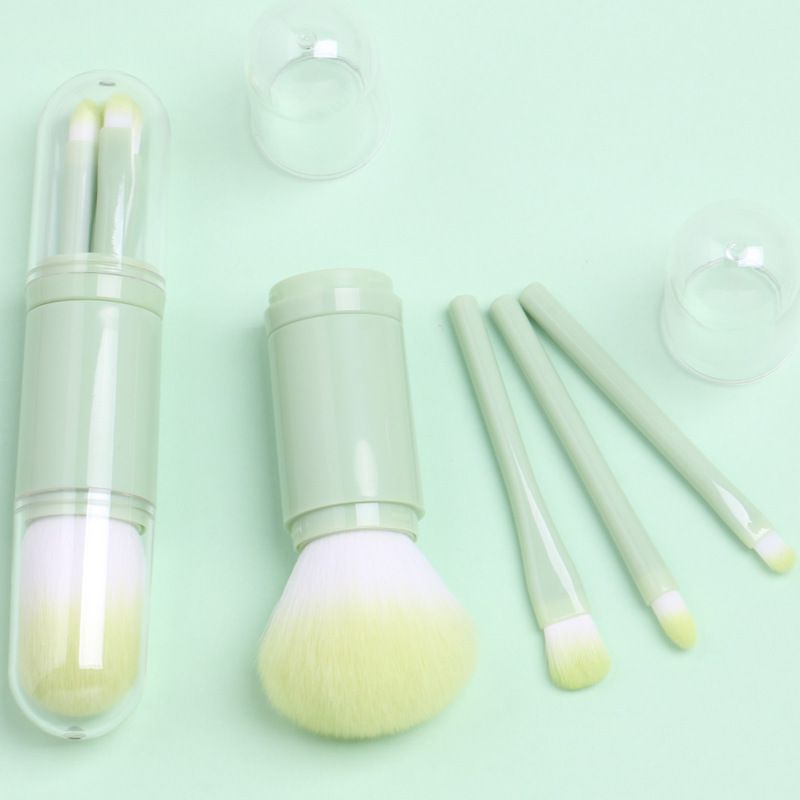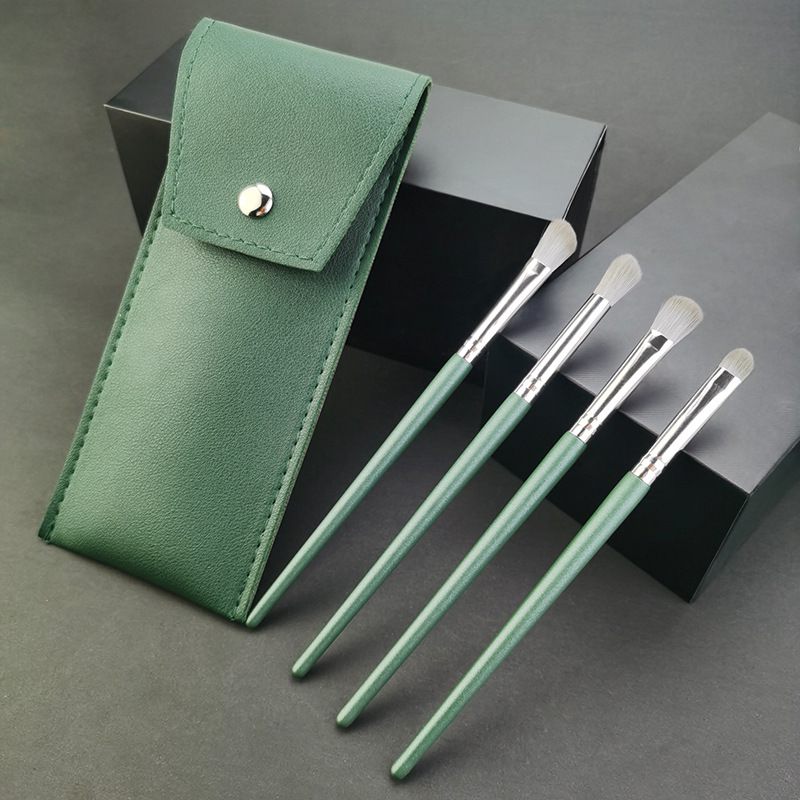Industry news
Natural vs. Synthetic Bristle Absorbency: Impact on Liquid Foundation and Powder Application
- 495 Views
- 2025-08-09 01:31:35
Natural vs. Synthetic Bristle Absorbency: How It Shapes Liquid Foundation and Powder Application
The choice of makeup brush bristle material—natural or synthetic—extends far beyond personal preference; it directly influences product absorption, application efficiency, and the final makeup look. Among the critical factors differentiating these materials, absorbency stands out as a game-changer, particularly when working with liquid foundation and powder products. Understanding how natural and synthetic bristles interact with these formulas can transform your makeup routine, ensuring optimal product use and desired results.
Natural bristles, typically sourced from animal hair (e.g., squirrel, goat, or badger), are celebrated for their softness and ability to mimic human hair. Their structure includes microscopic scales and hollow cores, natural features that enhance absorbency. These scales create tiny spaces that trap liquids and oils, while hollow shafts act like mini sponges, drawing moisture into the bristle. For instance, a high-quality goat hair brush, often used in luxury makeup tools, can absorb up to 30% of its weight in liquid product—a trait that shapes its performance with liquid formulas.

In contrast, synthetic bristles, crafted from man-made fibers like nylon or polyester, are engineered for consistency and durability. Unlike natural hair, their smooth, non-porous surfaces and tightly packed fibers minimize absorbency. Manufacturers design synthetic brushes to repel liquids rather than absorb them, ensuring most of the product stays on the bristle tips rather than seeping into the core. A typical nylon-bristle brush, for example, absorbs less than 5% of liquid foundation, keeping the formula intact for direct transfer to the skin.

Impact on Liquid Foundation Application

When it comes to liquid foundation, absorbency becomes a defining factor in both product waste and妆效. Natural bristles, with their high absorbency, act like a sponge: dip them into liquid foundation, and a significant portion of the formula is drawn into the bristles, leaving less on the surface for application. This often means users need to reload the brush multiple times to achieve desired coverage, increasing product consumption. However, the absorbed product can create a sheer, “second-skin” finish, as the remaining formula on the bristles blends seamlessly into the skin—ideal for a natural, dewy look.
Synthetic bristles, by contrast, are liquid foundation workhorses. Their low absorbency ensures that most of the foundation stays on the bristle exterior, allowing for one-pass application with minimal product waste. This efficiency is especially beneficial for high-coverage or luminous formulas, where preserving the product’s pigments and oils is key to achieving a flawless, radiant finish. Makeup artists often prefer synthetic brushes for liquid foundation not only for their cost-effectiveness but also for their ability to deliver consistent, streak-free results across different skin types.
Impact on Powder Application
The impact of absorbency shifts slightly when transitioning to powder products, such as setting powder or blush. While powders are dry, bristle absorbency still plays a role in how well the brush picks up, holds, and distributes the product. Natural bristles, with their porous structure, excel at “grabbing” powder ps, thanks to static and the slight moisture retention in their fibers (even when dry). This makes them ideal for loose powders, as they can evenly distribute product across the skin, creating a soft, diffused matte finish without looking cakey.
Synthetic bristles, with their smoother surfaces, have less static charge and lower powder retention. This can be an advantage for precise powder application, such as setting under-eye concealer or applying finely milled blush. The reduced absorbency means less powder is trapped in the brush, making it easier to control the amount applied—perfect for avoiding over-powdering or patchy areas. Additionally, synthetic brushes are easier to clean, as powder residue doesn’t cling to their fibers as stubbornly as it does to natural bristles, ensuring long-term performance.
Beyond Performance: Hygiene and Sustainability
Absorbency also intersects with broader trends like cruelty-free beauty and hygiene. Synthetic brushes, being animal-free, appeal to eco-conscious and vegan consumers, while their non-porous nature resists bacterial growth better than natural bristles, which can harbor oils and product residue in their hollow cores. For users with sensitive skin, this reduced bacterial risk is a significant plus.
Choosing Your Brush: A Personalized Approach
In the end, the “best” bristle material hinges on your makeup goals. For liquid foundation, synthetic bristles offer efficiency, waste reduction, and consistent coverage; for powder products, natural bristles provide superior blending and product pickup. By prioritizing absorbency as a key factor, you can elevate your makeup application from routine to artistry—ensuring every drop of foundation and every swipe of powder works in your favor.
SEO关键词











